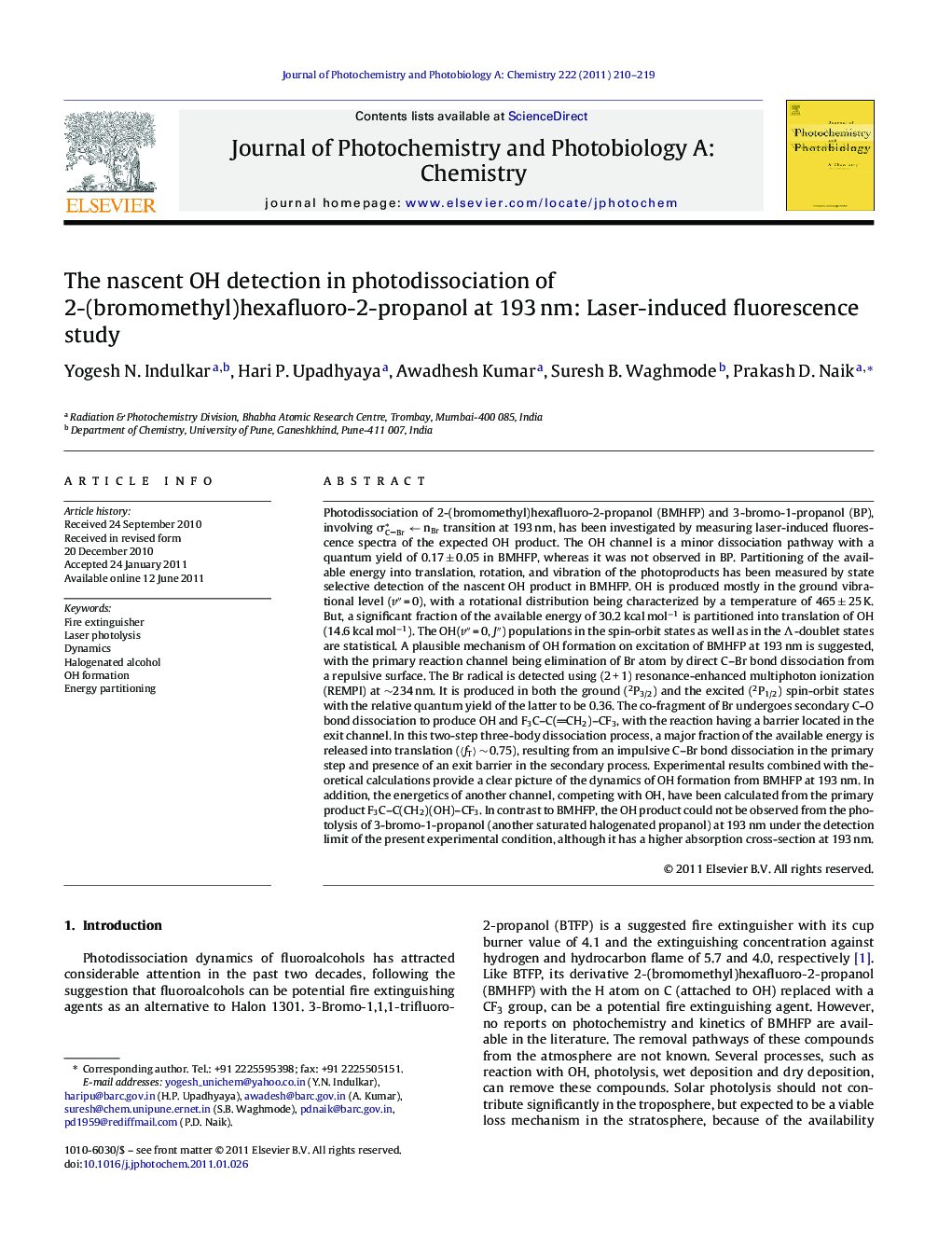| کد مقاله | کد نشریه | سال انتشار | مقاله انگلیسی | نسخه تمام متن |
|---|---|---|---|---|
| 27383 | 44018 | 2011 | 10 صفحه PDF | دانلود رایگان |

Photodissociation of 2-(bromomethyl)hexafluoro-2-propanol (BMHFP) and 3-bromo-1-propanol (BP), involving σC–Br*←nBr transition at 193 nm, has been investigated by measuring laser-induced fluorescence spectra of the expected OH product. The OH channel is a minor dissociation pathway with a quantum yield of 0.17 ± 0.05 in BMHFP, whereas it was not observed in BP. Partitioning of the available energy into translation, rotation, and vibration of the photoproducts has been measured by state selective detection of the nascent OH product in BMHFP. OH is produced mostly in the ground vibrational level (v″ = 0), with a rotational distribution being characterized by a temperature of 465 ± 25 K. But, a significant fraction of the available energy of 30.2 kcal mol−1 is partitioned into translation of OH (14.6 kcal mol−1). The OH(v″ = 0, J″) populations in the spin-orbit states as well as in the Λ-doublet states are statistical. A plausible mechanism of OH formation on excitation of BMHFP at 193 nm is suggested, with the primary reaction channel being elimination of Br atom by direct C–Br bond dissociation from a repulsive surface. The Br radical is detected using (2 + 1) resonance-enhanced multiphoton ionization (REMPI) at ∼234 nm. It is produced in both the ground (2P3/2) and the excited (2P1/2) spin-orbit states with the relative quantum yield of the latter to be 0.36. The co-fragment of Br undergoes secondary C–O bond dissociation to produce OH and F3C–C(CH2)–CF3, with the reaction having a barrier located in the exit channel. In this two-step three-body dissociation process, a major fraction of the available energy is released into translation (〈fT〉 ∼ 0.75), resulting from an impulsive C–Br bond dissociation in the primary step and presence of an exit barrier in the secondary process. Experimental results combined with theoretical calculations provide a clear picture of the dynamics of OH formation from BMHFP at 193 nm. In addition, the energetics of another channel, competing with OH, have been calculated from the primary product F3C–C(CH2)(OH)–CF3. In contrast to BMHFP, the OH product could not be observed from the photolysis of 3-bromo-1-propanol (another saturated halogenated propanol) at 193 nm under the detection limit of the present experimental condition, although it has a higher absorption cross-section at 193 nm.
► Photodissociation dynamics of bromopropanol derivatives investigated at 234 nm.
► REMPI detection of nascent bromine atom, produced on a repulsive surface.
► Anisotropic distributions of ground and spin-orbit excited bromine atoms observed.
► Relative quantum yields of bromine determined, with a strong preference for the ground state Br.
► Photofragmentation translational energy distribution of bromine atom measured.
Journal: Journal of Photochemistry and Photobiology A: Chemistry - Volume 222, Issue 1, 5 July 2011, Pages 210–219